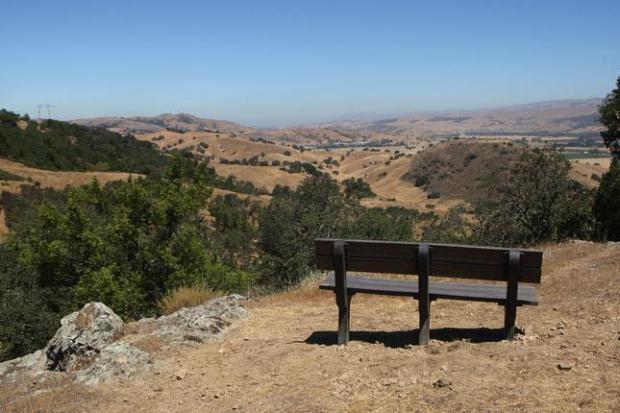Written by Paul Rogers. Published in the Mercury News June 27, 2015. Photo by Jim Gensheimer.
SAN JOSE — After decades of conflict over whether to build technology campuses and housing in Coyote Valley, the scenic expanse of ranches and farms on San Jose’s southern edges along Highway 101, a new momentum has begun to keep the area free of urban development, San Jose Mayor Sam Liccardo said Saturday.
Liccardo said that although the city’s general plan, approved in 2011, still allows for tech campus development in the northern part of the 7,400-acre Coyote Valley, no tech companies have approached him hoping to build there. And, Liccardo added, his strong preference is for the firms to locate downtown, in North San Jose or in other urbanized parts of the city.
“I have no desire to invest in infrastructure development on the southern edges of San Jose,” Liccardo said in an interview, adding that if no new construction ever came to the rural valley “I wouldn’t lose any sleep.”
Liccardo was on hand for the grand opening of the Coyote Valley Open Space Preserve, a 348-acre park in the foothills off Palm Avenue between San Jose and Morgan Hill that overlooks hay fields, farm stands and the rustic spread of Coyote Valley below.
The preserve, which beginning Saturday afternoon was open free to the public daily, has four miles of trails for hiking, biking and horse riding.
Purchased for $3.48 million in 2010 by the Santa Clara County Open Space Authority, a government agency based in San Jose, the former cattle ranch had been owned by investors who held an option with Palo Alto developer Charles “Chop” Keenan to build exclusive homes there. But when a wider development plan for Coyote Valley fell apart in 2008 as the economy and real estate values began collapsing, those plans stalled.
Last fall, preservationists began to gain the upper hand after years of playing defense in the area. The open space agency won two-thirds voter approval for a $24-per-home annual parcel tax, which will raise $8 million a year. The agency’s current top priority countywide is acquiring more land and development rights in Coyote Valley to preserve farming, wildlife and recreation, said Andrea Mackenzie, general manager of the agency.
“Our goal is to save as much of it as possible,” Mackenzie said Saturday. “It’s a new chapter for Coyote Valley. We now have the opportunity to press the reset button.”
The area has been one of the major environmental flash points in the South Bay for years.
In the 1980s, Apple and Tandem considered building new headquarters in Coyote Valley. By 1999, Cisco Systems proposed building a 6.6-million-square-foot campus for 20,000 employees just down the road from the new preserve.
The Cisco plan, supported by former San Jose Mayor Ron Gonzales, was met with lawsuits from the Sierra Club, Audubon Society and nearby communities like Salinas worried about traffic and the loss of farmland and wildlife — from mountain lions to black-tail deer. Cisco canceled its plans by 2002 after the tech bubble burst.
A new era seems to be dawning, longtime observers say.
“I rarely hear about folks still eyeing Coyote Valley these days,” said Carl Guardino, CEO of the Silicon Valley Leadership Group, which represents most of the area’s largest technology companies.
“People want to build where their talent is,” he said, “and that tends to focus more in urban centers than it does in rural land.”
Guardino added: “Open space has trumped campus space in Coyote Valley for at least four decades now, and I don’t see that changing anytime soon.”
At the ceremony Saturday, state Sen. Jim Beall, D-San Jose, recounted how developers back to the 1960s tried to pave Coyote Valley, but last November’s vote on Measure Q to fund open space was a clear message.
“The people have spoken,” Beall said. “They want this area preserved.”
Liccardo, who endorsed the measure and currently sits on the board of the Greenbelt Alliance, an environmental group that opposes Coyote Valley development, agreed.
“The open space authority should feel it has a mandate from the public to move aggressively,” he said.
Saturday afternoon, more than 500 people visited the new preserve in a steady stream of hiking boots, walking sticks, binoculars and sunscreen.
“I think it’s wonderful that these organizations are saving our open lands,” said Carol McCarthy, of San Jose. “We all know that if we didn’t save places like this, they would look like San Fernando Valley.”
Toby Goldberg, of Palo Alto, had her binoculars ready.
“We’re excited,” she said. “It’s always great to be checking out a new birding area. There are woodpeckers, hawks, even golden eagles here.”

